Why Deleted Files Keep Reappearing After Deletion?
"Hi, I'm using Windows 10. I did an update recently, and I don't know whether it's the trigger for the problem I'm going to state. Since yesterday, when I deleted some of my files they insisted on reappearing, typically audio files and images. This happened right after I refreshed or restarted the computer. I tried to emptied Recycle Bin, and even format a partition, but all failed. Files and folders keep coming back in Windows 10. How can I solve the problem?"
How frustrating! Getting rid of something you don't want on a computer could have been easy and effortless, simply by pressing a Delete button or by pressing the Shift + Delete keys to permanently delete files or folders. Why do deleted files keep reappearing on Windows 10? On this page, you'll need four solutions to fix deleted files keep coming back after deletion. Directly jump to the part you're most interested in fixing files and folders that keep coming back after deletion:
| Workable Solutions | Step-by-step Troubleshooting |
|---|---|
| Fix 1. Fix A Corrupted Recycle Bin | Run Command Prompt and type the command rd /s /q C:\$Recycle.bin...Full steps |
| Fix 2. Check Permissions | Right-click the file and choose Properties > click Security and choose...Full steps |
| Fix 3. Run Microsoft Safety Scanner | Select the type of scan you want to run among Quick, Full or Customized...Full steps |
| Fix 4. Turn off Cloud Services | Are you currently using a Cloud syncing service? If yes, it's the Sharp shell...Full steps |
How to Fix Deleted Files/Folders Keep Coming Back on Windows 10/8/7
We find some clues that may cause the deletion trouble in Windows 10, and hope that your case is the same. Depending on the situation you are in, you may need to try different solutions to cope with the issue.
Fix 1. Fix A Corrupted Recycle Bin
If you see files and folders in Windows Recycle Bin keep coming back after a refresh, it's most likely that something went wrong with the Recycle Bin application. To stop files from reappearing after emptied recycle bin, you need to fix the corrupted recycle bin in Windows 10 by using the command prompt.
Step 1. Run "Command Prompt" as an administrator in Windows 10.
Step 2. Type the command rd /s /q C:\$Recycle.bin and press "Enter".
Step 3. Type exit to close the Command Prompt window.
Fix 2. Check Permissions
If you are not allowed to make changes to the files or folders by the system, how can you successfully remove items from your computer? Thus, the first thing you need to do is to check your system permission. (The steps below are performed on Windows 10.)
Step 1. Find and right-click on the file/folder you want to delete, then choose "Properties".
Step 2. Click the "Security" tab and choose "Advanced" at the bottom.
Step 3. Click the link "Change" next to "Owner".
Step 4. In the box, input everyone and click "OK".
Step 5. Go back to the "Security" tab, click "Edit" to change permissions.
Step 6. In the "Permissions for SYSTEM" section, choose "Allow" for all permissions.
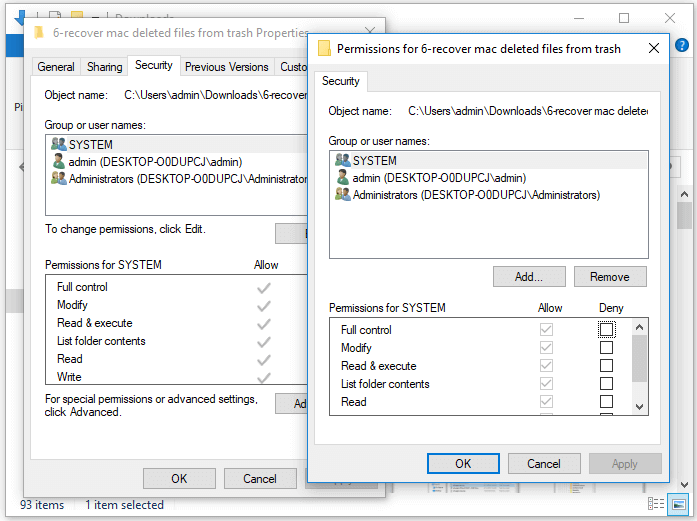
Fix 3. Run Microsoft Safety Scanner
"Deleted files or folders keep coming back" can also be caused by a virus or malicious software. Microsoft Safety Scanner works as a malware removal tool that can be used to scan your system for viruses or other kinds of malware and then remove them. Thus, it's also effective to run the Microsoft Safety Scanner to solve the problem of files/folders keeping coming back after deletion.
Step 1. Since Microsoft Safety Scanner is not a built-in tool in Windows, you will need to download it first from the official Microsoft site.
Step 2. Run the tool and select the type of scan you want to run, Quick scan, Full scan, or Customized scan. Then click "Next"
Step 3. Wait for the scanning process to complete. When it has done, the scanner will tell you there is no virus found or it has removed the deleted viruses, spyware, and other potentially unwanted software. If there is malicious software deleted and removed, you can click "View detailed results of the scan" to check for more information.
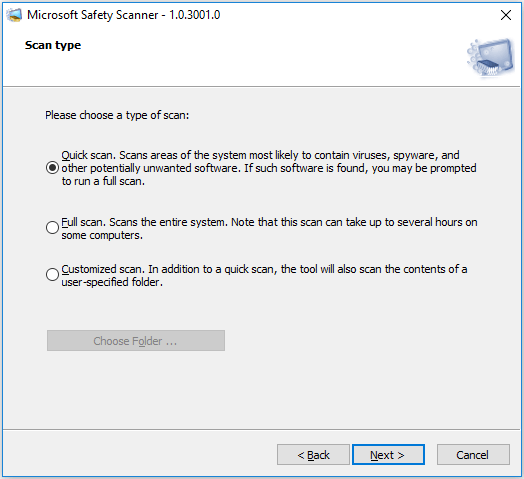
If there are files and folders being infected by a virus or malware, they will be removed by the Microsoft Safety Scanner. Thus, data loss may be found after the fix. That's when you need the EaseUS Data Recovery Wizard - EaseUS Data Recovery Wizard to recover your precious data.
Fix 4. Remove/Turn Off Syncing Services
Do you currently use a cloud syncing service? If you do, the problem is there. Whether you're using Windows 10 cloud storage or a third-party cloud syncing app, they're probably Sharp shell that controls the context menu. You don't need to know the exact impact of the Sharp shell. Just uninstall the cloud storage or turn off the syncing service, the deletion function will return to normal without the files and folders reappearing.
Bonus Tip - How to Recover Deleted Files in Windows 11/10/8/7
If there are files you don't want to delete after you have emptied the recycle bin, how can you make it? All you need is EaseUS data recovery software. This file recovery tool works well in restoring lost from a hard drive, SSD, SD card, and more.
- Support deleted file recovery, formatting, hard drive corruption, virus attack, system crash under different situations.
- Recover files from formatted hard drive, emptied recycle bin, memory card, flash drive, digital camera, and camcorders
- Restore deleted photos, Word files, videos, audio files, Excel data, and other important documents on your storage media.
Step 1. Select a location and start scanning
Launch EaseUS Data Recovery Wizard, hover on the partition/drive where the deleted files were stored. Click "Search for Lost Data" to find lost files.
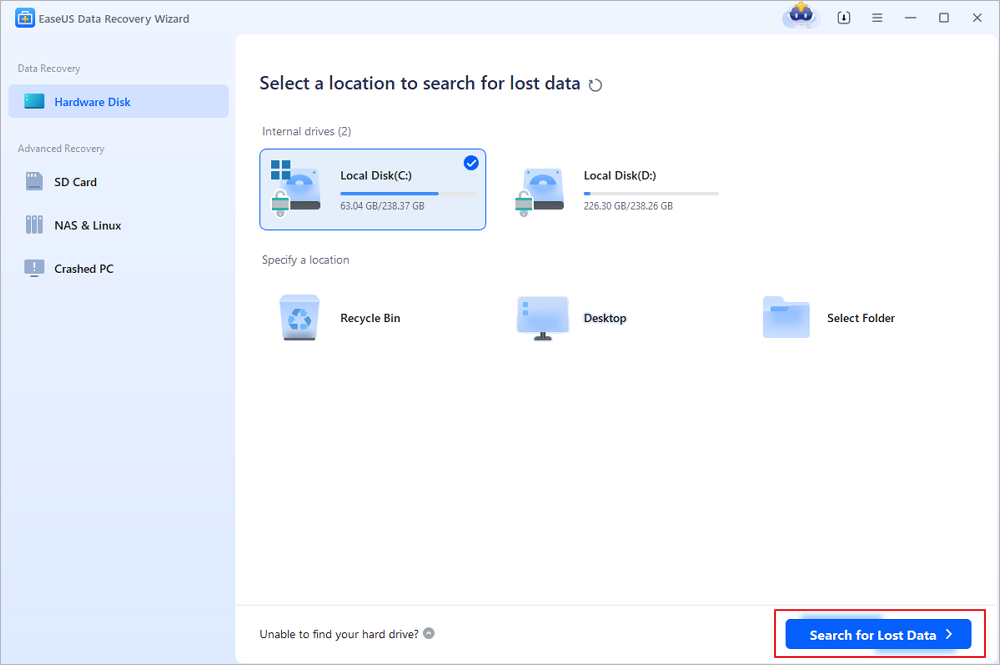
Step 2. Select the files you want to recover
When the scanning has finished, select the deleted files you want to recover. You can click on the filter to display only the file types you want. If you remember the file name, you can also search in the search box, which is the fastest way to find the target file.
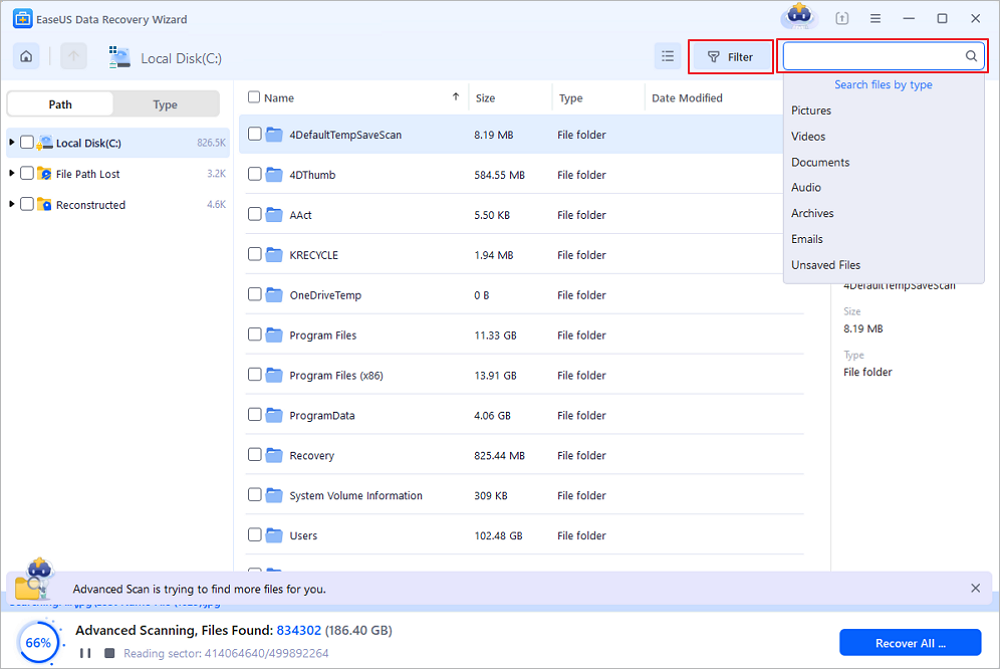
Step 3. Preview and recover deleted files
Preview the recoverable files. Then, select files you want to restore and click "Recover" to store the files at a new storage locations instead of the disk where the data was previously lost. You can choose a cloud storage, such as OneDrive, Google Drive, etc., and click "Save" to save your recovered files.
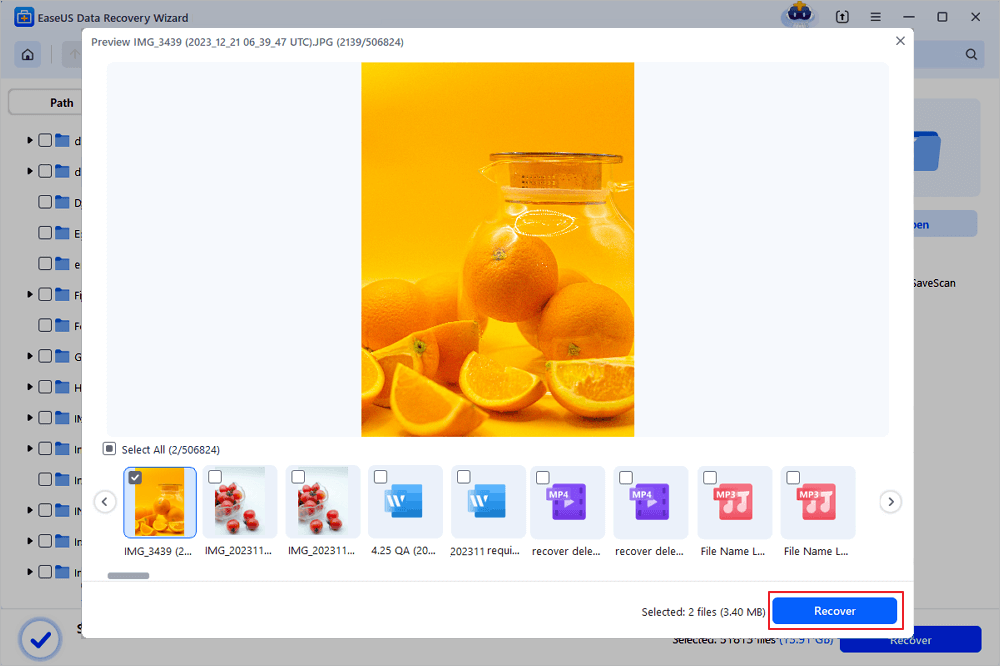
The Bottom Line
Usually, when files are stubbornly returning after deletion, the most heard suggestion is to format the hard disk partition where the problem shows up. This formatting behavior could work only when hard drive corruption leads to the error.
Even though, do not attempt to try formatting so easily. All data will be erased during the process. If you've tried the method and failed. Unfortunately, you've lost all data and demand a recovery. In this case, download EaseUS hard drive recovery software to recover the formatted hard drive with ease.
Was This Page Helpful?
Jaden is one of the editors of EaseUS, who focuses on topics concerning PCs and Mac data recovery. Jaden is committed to enhancing professional IT knowledge and writing abilities. She is always keen on new and intelligent products.
Approved by Evan Galasso
Evan Galasso is a digital forensics and data recovery engineer with over 10 years of experience in the field. He presents opinions on the current state of storage media, reverse engineering of storage systems and firmware, and electro-mechanical systems of SSDs and HDDs.
Related Articles
-
How Do I Recover Document in SharePoint | Click Here
![author icon]() Tracy King/Dec 12, 2025
Tracy King/Dec 12, 2025 -
How to Repair PDF File Using Acrobat? 2025 Adobe PDF Repair Tool
![author icon]() Tracy King/Dec 15, 2025
Tracy King/Dec 15, 2025 -
PXE-E61: Media Test Failure, Check Cable [SOLVED]
![author icon]() Dany/Dec 12, 2025
Dany/Dec 12, 2025 -
[Updated 2025] How to Fix Windows 11 Start Menu Not Working
![author icon]() Jaden/Dec 12, 2025
Jaden/Dec 12, 2025